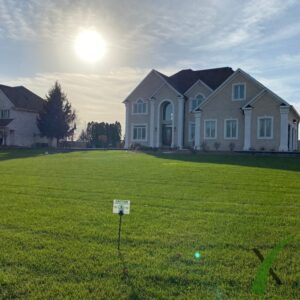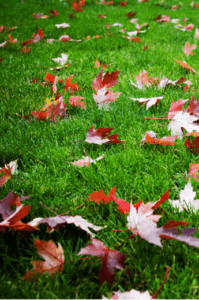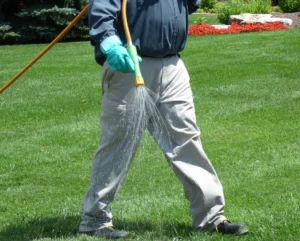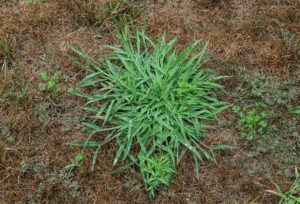A green lawn all winter? Is that a real possibility? Sure, it is. If you happen to live in the mid to deep south, across lower Missouri, Tennessee, Georgia and the Carolinas, the turf in your lawn may well be zoysia or bermudagrass. Both go dormant at first frost; but both can be over-seeded with a cool-season grass variety, like ryegrass or turf type fescue, or Kentucky bluegrass.
What Grass Stays Green During the Winter?
If your home is in the northern two-thirds of the country, your lawn will likely be Kentucky bluegrass or a blend of bluegrass, turf-type or fine fescue and perennial ryegrass. These cool-season varieties can stay green all winter, especially if your lawn environment provides some protection from drying winter winds that desiccate turf plants. Most browning of northern lawns is due to drying out vs purely low temperatures.

Lawn Care Tips To Keep Your Grass Healthy And Green During the Winter
Seeding in September gives the cool-season grass a chance to get established before winter and, by the time your summer lawn goes dormant and browns off, you will have a beautiful lawn of bright green turf. And the beautiful, green color will hold until hot weather takes out the winter season varieties next spring.
Ever notice how, when you venture out to make your first spring mowing, the lawn seems to have grown in the winter? The fact is, it has! And leaving short clippings on the lawn after the last mowing will add additional protection to tender grass plant crowns, helping the lawn continue to grow, albeit very slowly, all winter long. No, you won’t be mowing in January but even a small amount of growth helps the turf maintain it’s color in winter.
Applying a slow-release, late fall fertilizer will also help grass plants maintain slow growth and photosynthesis during the cold, blustery months.
So, can you have at least a modestly green grass during winter time? The simple answer is YES. The link here describes the over-seeding process, another beneficial service for your lawn before spring.

Join Our Free Lawn Care Newsletter
Stay Up to Date With The Latest News & Updates
* We don’t share your info with anyone ever.







